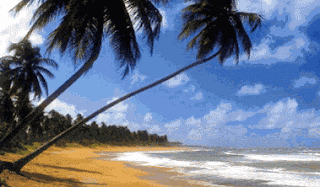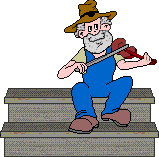VARIOUS ASPECTS OF CROATIAN CULTURE-all presented in our numerous eTwinning School projects online
... LISTED IN RANDOMIZED ORDER...
e. g. let's start with - MUSIC
... LISTED IN RANDOMIZED ORDER...
e. g. let's start with - MUSIC


then, we'll carry on WITH OUR FANTASTIC
- CROATIAN
INTERLACE – HRVATSKI PLETER
OUR CULTURE ROOTED TREASURE!
OUR CULTURE ROOTED TREASURE!
The Croatian interlace or Croatian
wattle, known as the pleter or troplet in Croatian, is a type of interlace,
most characteristic for its three-ribbon pattern. It is one of the most often
used patterns of pre-romanesque Croatian art. It is found on and within churches as well asmonasteries built in early
medieval Kingdom of Croatia between the 9th and beginning of the
12th century.
The ornamental
strings were sometimes grouped together with animal and herbal figures.
Most representative
examples of inscriptions embellished with the interlace include the Baška tablet
and the Branimir Inscription.
Other notable
examples are located near Knin, in Ždrapanj and
Žavić by the Bribir settlement, Rižnice near Solin and in Split and Zadar.
Croatian
interlace bordering the emblem of the Armed Forces of the Republic of Croatia
One of notable examples of a widespread local usage of
interlace is the three-ribbon
interlace found in the early medieval Croatia on stone carvings from 9th to 11th century.
ANYWAY, CARRY ON WITH NUMEROUS SOUVENIRS FROM OUR CROATIA! ENJOJ!
- CROATIAN SOUVENIRS TO YOU!
- BASIC FACTS ABOUT THE CROATIAN
LANGUAGE AND
SCRIPT
- The
language we speak is Croatian, and the official script we use today
is exclusively the Latin script. Croatian is a Slavic language, belonging
to the South Slavic, Western subgroup of the Slavic branch of the
Indo-European family, and like other Slavic languages it developed from
Old Slavic.
- In the
history of Croatian people three scripts were in use:
- It is
important to emphasize that the earliest known texts of Croatian
literature written in the Latin script (14th century) have traces of Church-slavonic
influences. Hence, Croatian glagolitic, Cyrillic and Latin traditions
cannot be viewed as separated entities. We know that Middle Age Croatian
scriptoriums were polygraphic (for example in Zadar and Krk)
- In addition to its standard
language, Croatia is rich in dialects originating from the Chakavian, Kaikavian and
Shtokavian vernacular.
- The Croatian written language heritage
goes back to the end of the 11th century. The oldest Croatian texts were
written in a kind of Croatian version of Church Slavonic and archaic
Chakavian, exclusively in Glagolitic script. Bartol Kašić, a
Jesuit from the Island of Pag, wrote the first grammar of the Croatian
language, in latin, entitled Institutionum linguae
Illyricae (The Basics of the Illyrian Language).
This grammar, printed in 1604. in Rome, influenced nearly all Croatian
grammar books written by the firsthalf of the 19th century. The beginnings
of the standardisation of today’s Croatian go back to the 18th century,
and at the end of the 19th century the foundations of current standard
Croatian were set. Over 5.5 million people use Croatian as their mother
tongue. The first person who delivered a speech in Croatian in the
Croatian Parliament was Ivan Kukuljević
Sakcinski on 2 May 1843 in an effort to fight for national independence
and for Croatian to be introduced as the official language in schools and
offices.
- In the Croatian languege
Nouns have seven cases
which change according to its gender /male, female, neutral/ and should be
in accordance with adjectives – not easy to learn, too!
- Useful Phrases
POZDRAVI- greetings
Dobro jutro!- Good morning!
Dobar dan!- Good morning!
Dobra večer!- Good evening!
Laku noć!- Good night!
Doviđenja!- Goodbye!
Bok!- Hi!
Kako se ti zoveš?- What is your name?
Zovem se...- My name is...
Drago mi je- How do you do
KORISNE FRAZE- Useful phrases
Gdje je?- Where is?
Oprostite- Excuse me
Hvala Vam- Thank you
Nema na čemu- You are welcome
Molim- Please
Ne razumijem- I don't understand
Govorite polako- Speak slowly
Volim te!- I love you!
Sretan put!- Pleasant journey!
Dobro došli- Welcome
Koliko stoji?- How much does it cost?
Račun molim!- Cheque please
- The Croatian languege is phonological/phonemic, meaning you pronounce words (almost) the way they are written, which is a good news when dealing with this, not easy to learn.
SALONA – THE LARGEST ONE (74 ha)
POLA/Pula (24 ha)
IADER/Zadar (14 ha)
PARENTIUM/Poreč (7 ha)
ISSA/Vis ( ha)
PHAROS/Stari Grad ( ha)
TARSATICA/Rijeka ( ha)
AENONA/Nin ( ha)
ARVA/Rab ( ha)
GROUND PLAND OF CROATIAN ANTIQUE
TOWNS
• REGULAR GROUND PLAN
‐ ortogonalan (Issa, Pharos,
Parentium, Iader)
‐ radio‐centričan (Pola)
• IRREGULAR GROUND PLAN: Asseria, Varvaria
- INTANGIBLE CULTURAL HERITAGE OF CROATIA-NO ONE IN EUROPE
link:
link:
ANNUAL CARNIVAL BELLRINGERS' PAGEANT FROM THE KASTAV AREA
PROCESSION "ZA KRIŽEM" - HVAR
WOODEN TOYS FROM ZAGORJE
LJELJE FROM GORJANI
LACE MAKING
TWO-PART SINGING AND PLAYING IN THE ISTRIAN SCALE
ALKA FROM SINJ
LICITAR HEARTS
BEĆARAC SINGING - EAST CROATIA /SLAVONIA/
- CROATIAN ART HISTORY
A SHORT HISTORY OF THE CROATIAN NATIONAL ANTHEM
IVANA BRLIĆ-MAŽURANIĆ
http://crocodoc.com/hJyUi5m
- SCENIC BEAUTIES: NATIONAL PARKS, CAVES, CRYSTAL CLEAR SEA... THE BLUE SKY...
- ECO ASPECT
- NATIONAL PARKS AROUND CROATIA /SCENIC BEAUTIES/
link:
CROATIAN NATIONAL PARKS! EIGHT FANTASTIC SYMBOLS OF HIS PRESENCE ON EARTH!
CROATIAN
NATIONAL PARKS
Unspoiled nature of the Croatian National
Parks and the diversity of flora and fauna will leave no one indifferent.
Croatia has eight national parks : Brijuni, Kornati, Krka, Mljet,
Paklenica,Plitvice Lakes, Risnjak and Northern Velebit, whose unspoiled nature
takes almost 8 % of Croatia.
A
National Park is a large tract of land with exceptional natural features,
comprising one or more ecosystems that have been unaltered or only marginally
altered by human activity. Only traditional forms of agriculture, tourism and
recreational activities are allowed there.
If you want to explore Croatian National parks, National park Brijuni, which has its 14 islands and is often reffered as heaven on earth, National park Kornati, with about 140 small islands which are known for its wonderful shapes, varied and unusual forms and high cliffs, or National park Plitvice Lakes with 16 lakes which are connected by waterfalls as high as 78 meters are only some of the Croatian national parks that will simply amaze you with its natural beauties.
Brijuni National park
A characteristic that makes Brijuni even more valuable in relation to
other areas of this climate is its vegetation. On Veliki Brijun an
extraordinary unity of natural elements and anthropogenesis has been achieved.
By taking up the farmlands and by clearing the forests and transforming them
into landscape parks with vast meadows, a unique landscape on the Croatian
Adriatic coast has been created.
Macchia 261 ha
Meadows 124 ha
Parks 118 ha
Holm oak forests 68 ha
Holm oak and laurel forests 48 ha
Conifers 18 ha
Meadows 124 ha
Parks 118 ha
Holm oak forests 68 ha
Holm oak and laurel forests 48 ha
Conifers 18 ha
It is interesting to point out that on the islands there are some plant species that are among the endangered plant species of Istria (marine poppy, wild cucumber, some grass species etc.), but on the islands they are quite widespread and develop freely.
SUBMARINEWORLD
The indentation of the coastline, the
diversity of the base, the bathymetric configuration and the specific
hydrodynamic conditions are reflected in the wide variety of littoral
biocoenoses - life communities - that are characteristic for the northern
Adriatic region and are still unaffected by direct sources of contamination.
The local seas of Brijuni are important
hatching grounds and representative oasis (marine park) for the typical marine
organisms of the northern Adriatic, that is their colonies andcommunities. Of
the marine organisms that are protected by the Law on Environmental
Conservation in the waters of Brijuni you can find the pen-shell (Pinna
nobilis) and the date-shell (Lithophaga lithophaga). Turtles and dolphins, the
protected marine vertebrates, can also from time to time be seen in the waters
of Brijuni. There are also some endemic species like the black tang, Jadranski
bračić, and the tunicate, Jadranski ciganin.
The seabed abounds in sponges, shellfish,
sea urchins, crustaceans, fish etc. Among fish the most numerous are sea
basses, giltheads, grey mullets, soles, groupers, conger eels, dentexes, black
umbers… In the past in the seas of Brijuni were found some species that were
never seen in the Adriatic, as well as some species up to then unknown to
scientists like the soft coral Alcyonium brionense (Kuekenthal 1906) or the
variety of the sponge Ircinia variabilis fistulata (Syzmanski 1904).
- CULTURAL AND HISTORICAL HERITAGE
When on the Istrian island of Brijuni all the yet unexplored and mostly
inaccessible monuments from all ages, from the early periods of the pre-Roman
Istria until the 16th century, will be discovered and made accessible to
research then this beautiful island will be a unique museum rich in
architectonic inventory of high artistic and historic importance. To all the
cultures, which settled through history on the northern Adriatic coast, will be
possible to ascribe at least one monument of architectonic heritage or some
other artefact witnessing its presence.
A. Gnirs, 1911.
A. Gnirs, 1911.
The archipelago of Brijuni is an extraordinary blend of natural, historical and cultural heritage. The mild climate and the favourable geographical conditions, deep retracted bays and easily defendable elevated fortifications, have secured a continuum in the human activity on the island from a pre-historic age until the present day. On a relatively small archipelago, of an area of around 7km2, have been registered some hundred sites and buildings of archaeological and cultural-historical value and which comprise the period from the first Neolithic settlements, the dugouts in the bay of Soline, until the creation of an elite summer and health resort at the beginning of the last century and the presidential residency visited by statesmen from one third of the world’s countries in its 25 years of existence (1954-1979).
This concise curriculum vitae of the
island, which carefully preserves the traces of 5000 years of human history,
makes the legend of its creation even more real and when arriving to the island
a part of Heaven discloses in front of our eyes in the unique harmony of
the island’s flora, fauna and heritage. A unique bland of the green islands
sank into the turquoise-blue sea whose bays and hills are laced with the white
Istrian rocks.
- CROATIAN BRANDS: E. G. INTERLACE AND GLAGOLITZA - TWO VITAL CROATIAN BRANDS!
- FOLKLORE AND TRADITIONAL ARTS:
- PAINTING: E. G. MODERN PAINTERS
 - HOLIDAYS IN CROATIA!
- HOLIDAYS IN CROATIA!
- BOOKS:
and e-books-Croatia
- SCENIC BEAUTIES OF OUR CROATIA
MEMORIES OF ZADAR
- FESTIVITIES, MANIFESTATIONS, TRADITIONS AND ARTS...
PATER NOSTER IN MANY LANGUAGES
- TRADITIONAL EVENTS: E. G. RAB FJERA
- OUR HOMETOWN - ALL THE TIME!
- E. G. CROATIAN CATHEDRALS
- piles of documents, information...no matter the project issues...
e. g. ACADEMIA CRAVATICA
Architecture of the city of Zadar
ARCHITECTURE OF OUR BELOVED ZADAR!
postage stamps promote national culture, too!
we presented some of these...
DUBROVNIK:
CROATIAN NAIVE PAINTING
GLASSWARE-ALL HANDMADE!
GREETS FROM ZADAR!
PICTURE POSTCARDS-VALUABLE SOURCE OF INFO!















.jpg)

























.jpg)
.jpg)
.jpg)
.jpg)




































Nema komentara:
Objavi komentar